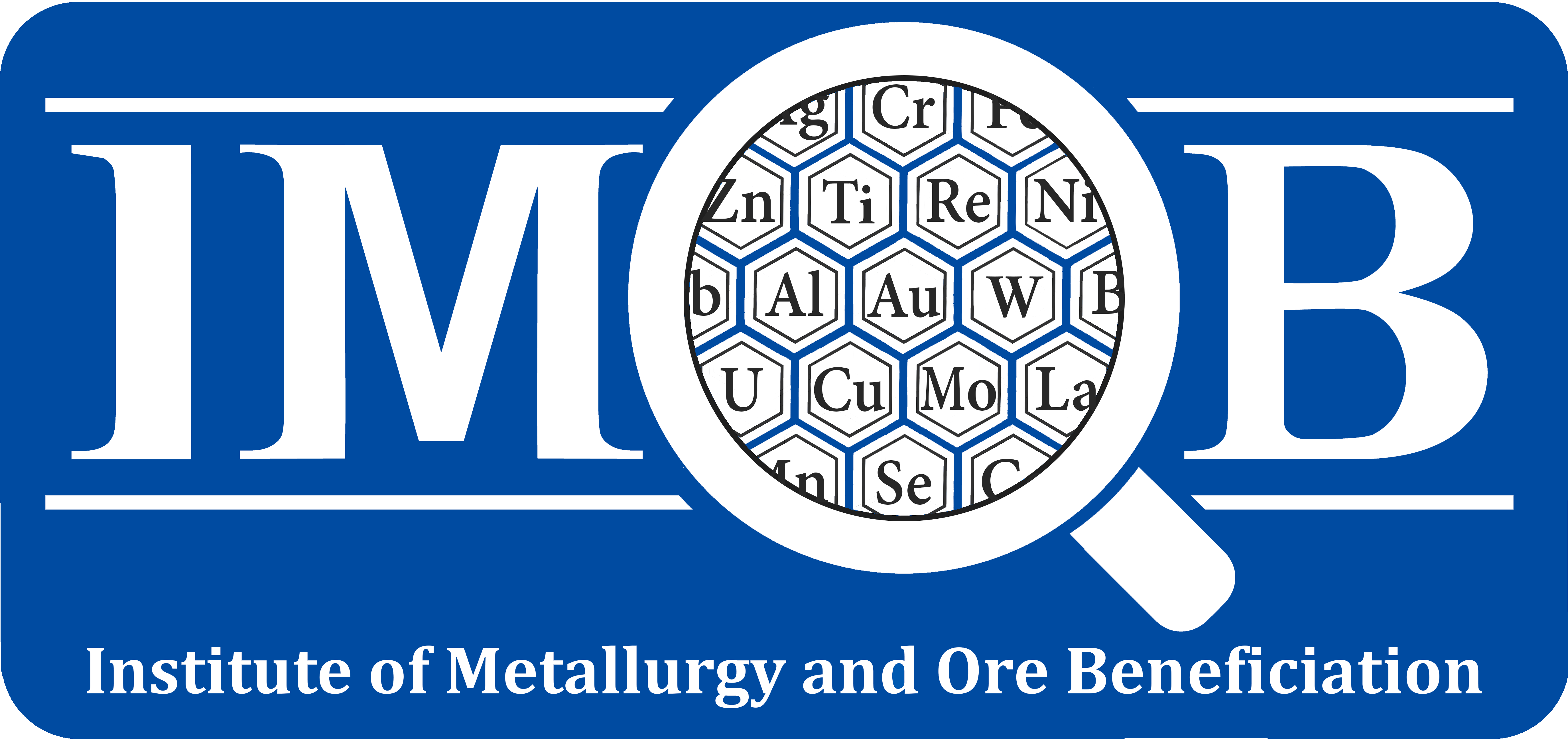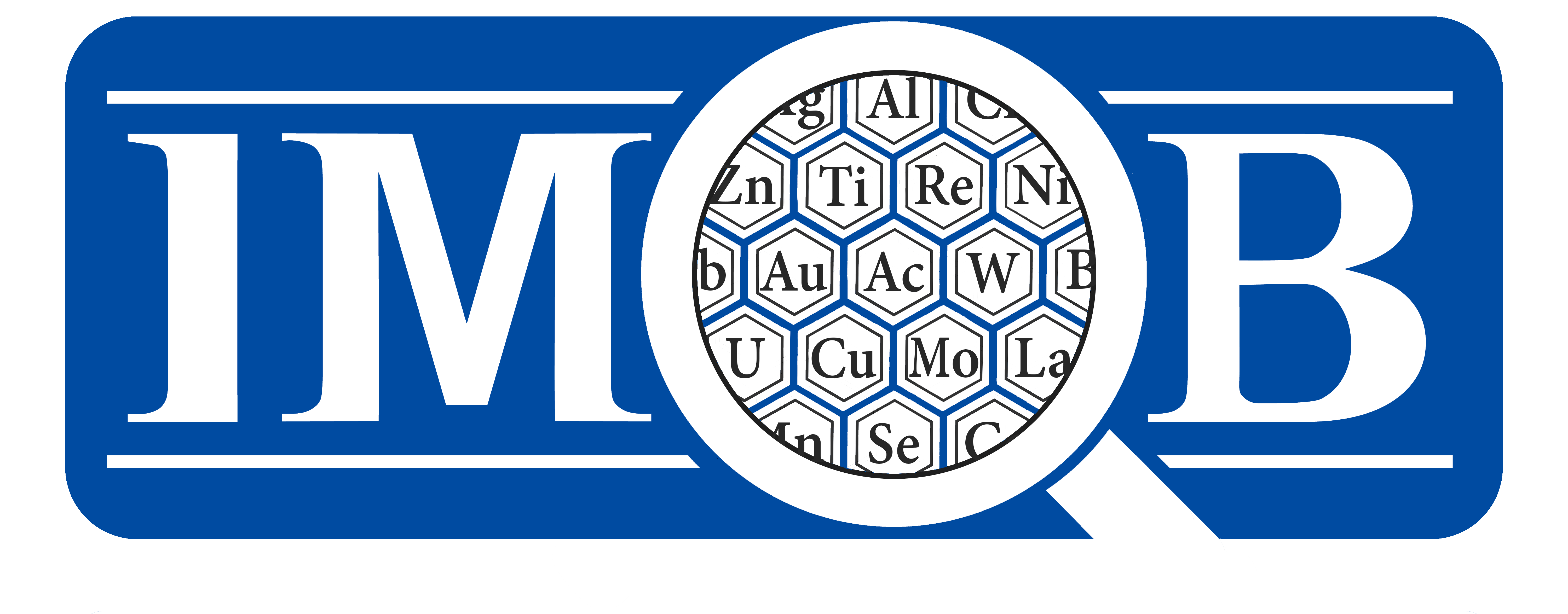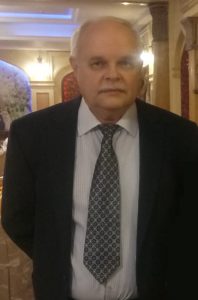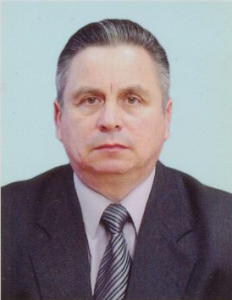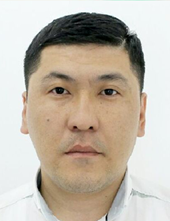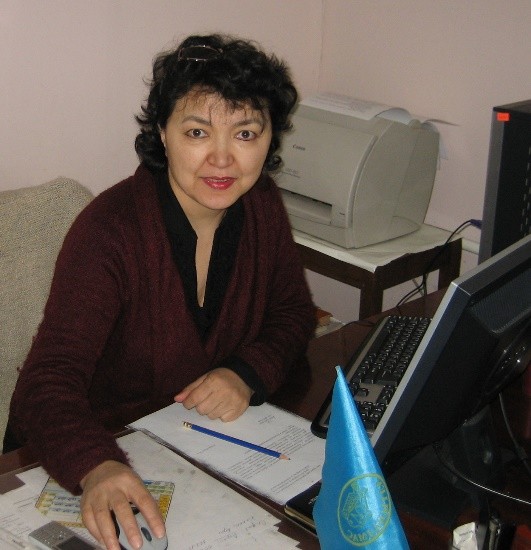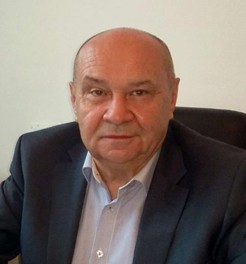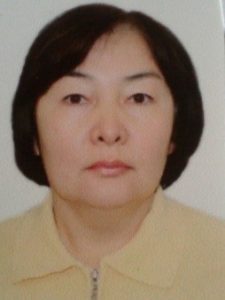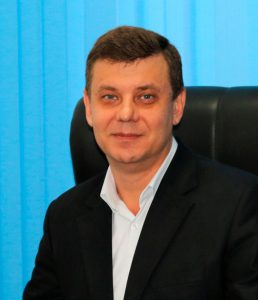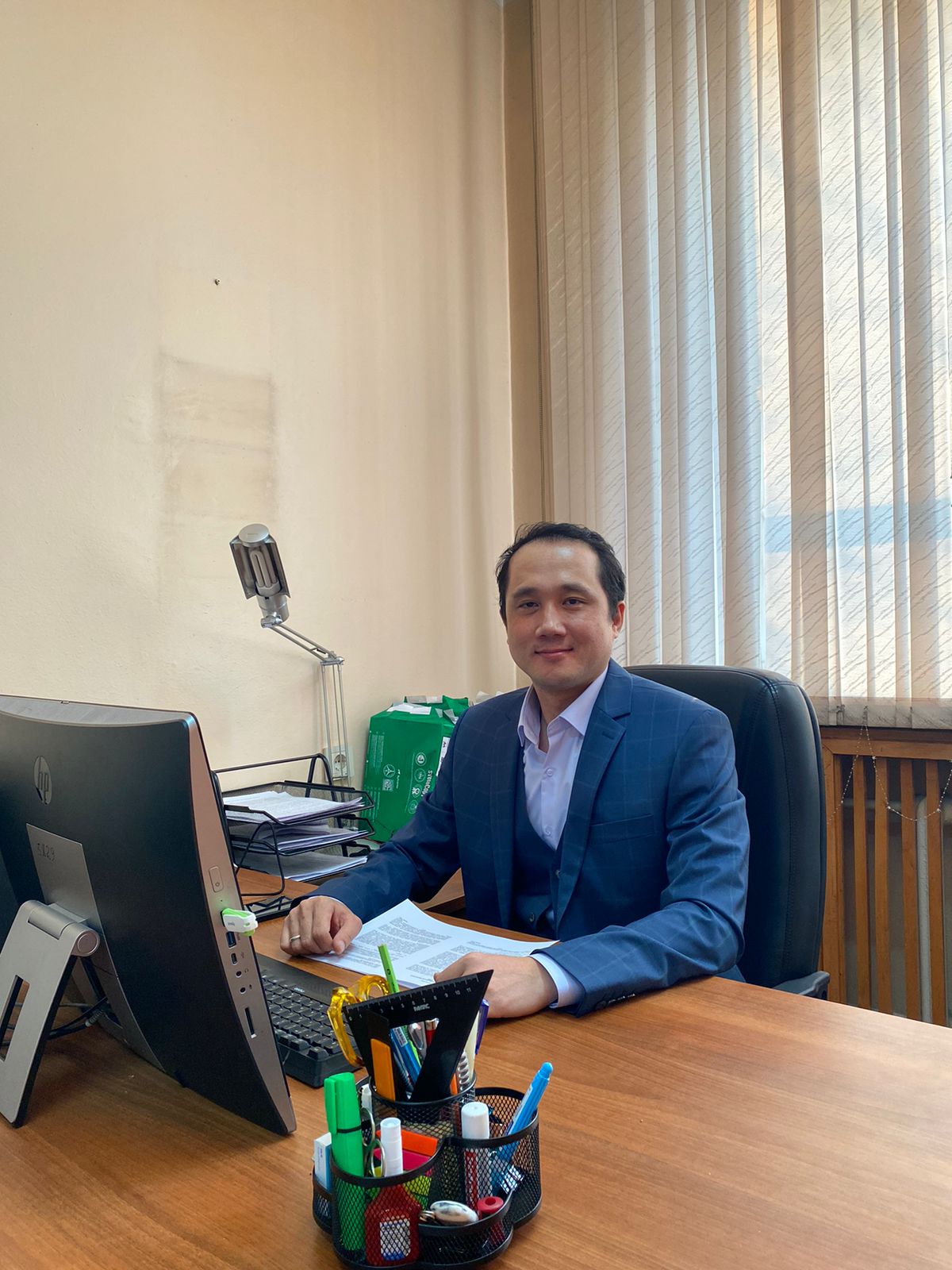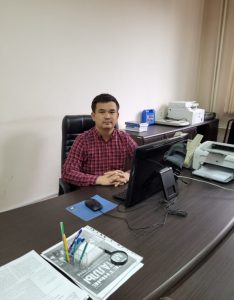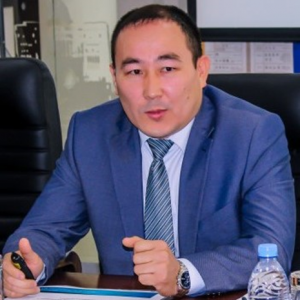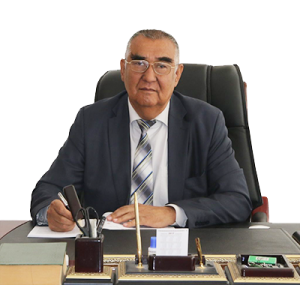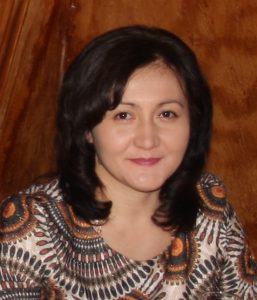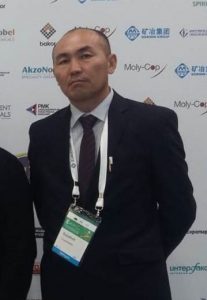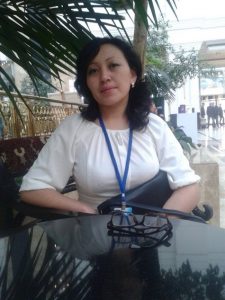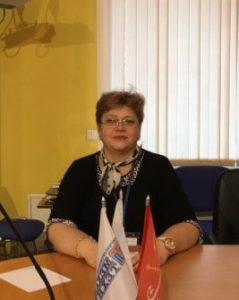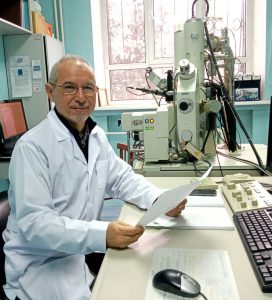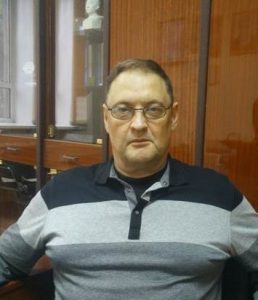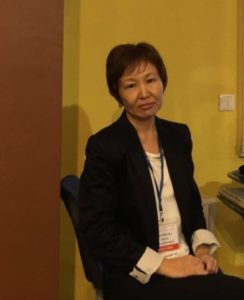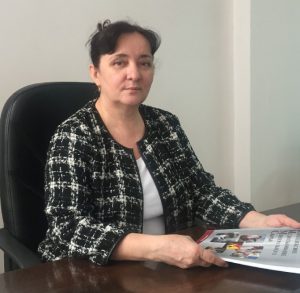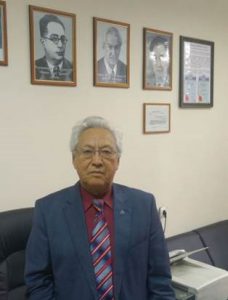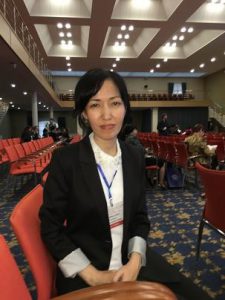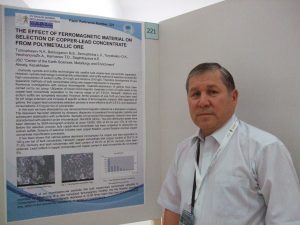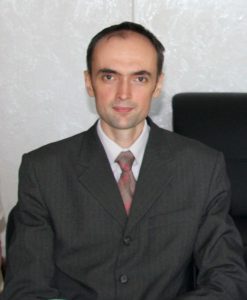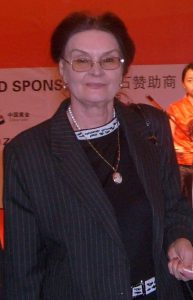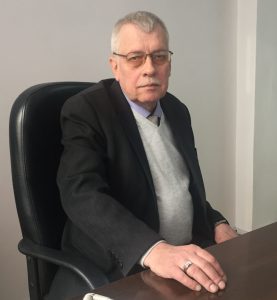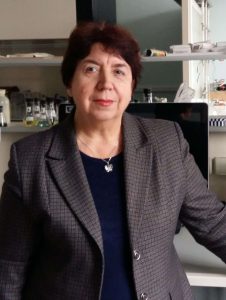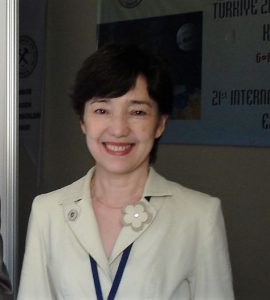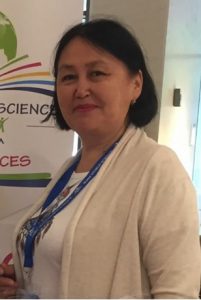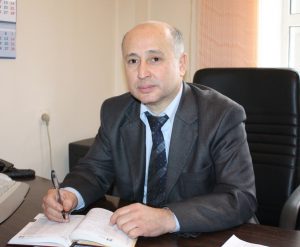AP19675985
Development of a highly efficient technology intended to process hard-to-recover zinc-containing raw materials with preliminary exposure to microwave radiation and ultrasound
Project Manager: Kenzhaliyev B.K.
Relevance:The technology includes pretreatment of raw materials using microwave radiation and ultrasound which makes it possible to influence the structure by weakening the bonds of minerals containing non-ferrous and noble metals with the host rock and enhances their extraction. Hard-to-recover zinc-containing anthropogenic raw material (clinker) is a difficult object for metallurgical processing due to the high content of waste rock, so it is usually stockpiled in slurry fields. At the same time, clinker contains such valuable components as non-ferrous metals, solid carbon, metallic iron and, importantly, noble metals. In some cases their amount reaches 2%. The project is aimed to develop an effective technology for the extraction of non-ferrous and noble metals with preliminary exposure of the raw material to microwave radiation and ultrasound.
Project goal:Development of highly efficient technology for extraction of non-ferrous and noble metals from hard-to-recover zinc-containing anthropogenic raw materials.
Objectives of the project:
-Study of physical and chemical composition of the initial anthropogenic raw materials and products of its processing. The development of the main technological parameters of microwave radiation and ultrasound exposure to anthropogenic raw materials, the study of the transformation of its structure. Substantiation of the approach to implement the method of processing the hard-to-recover anthropogenic zinc-containing raw materials based on the analysis of the received data.
-Study of kinetic regularities of valuable components leaching from anthropogenic raw materials by acid and alkali solutions after preliminary exposure to microwave radiation and ultrasound. Physical and chemical studies of products after exposure to microwave radiation and ultrasonic waves. Application of the regression analysis.
-Development and testing in large-scaled laboratory conditions of the technology intended to process hard-to-recover zinc-containing anthropogenic raw materials with the preliminary influence of microwave radiation and ultrasound. Issuance of initial data for the development of technological regulations and recommendations for the technology implementation.
Expected results:
According to the research results:
- The physical and chemical composition of the initial anthropogenic raw materials products of its processing was investigated; the main technological parameters of microwave radiation and ultrasound exposure to anthropogenic raw materials were developed, the transformation of the structure of raw materials was studied. The approach to implement the method to process the hard-to-recover anthropogenic zinc-containing raw materials will be substantiated based on the analysis of the received data.
- The kinetic regularities of leaching of valuable components from anthropogenic raw materials by acid and alkali solutions after preliminary exposure to microwave radiation and ultrasound and physical and chemical studies of products will be studied. Regression analysis will be applied.
- The technology of processing hard-to-recover zinc-containing raw materials with preliminary exposure to microwave radiation and ultrasound will be developed and tested under large-scaled laboratory conditions. Initial data for technological regulations development and recommendations for technology implementation will be given.
At least 3 articles will be published as a result of the research under the project:
- At least 3 articles and/or reviews in peer-reviewed scientific journals indexed in the Science Citation Index Expanded database Web of Science and (or) having a CiteScore percentile in the Scopus database of at least 35 (thirty-five);
- as well as 1 article or review in a peer-reviewed foreign or domestic publication recommended by the CQASHE;
- or at least two (2) articles and (or) reviews in peer-reviewed scientific journals indexed in the Science Citation Index Expanded and included in the first and/or second quartile by the impact factor in the Web of Science database and (or) having the CiteScore percentile in the Scopus database not less than 65 (sixty-five);
- or at least one (1) article or review in a peer-reviewed scientific journal indexed in the Science Citation Index Expanded and included in the first quartile by the impact factor in the Web of Science database and (or) having the percentile by CiteScore in the Scopus database not less than 80 (eighty).
List of published works:
1 B. Kenzhaliyev, T. Surkova, A. Berkinbayeva, Zh. Baltabekova, K. Smailov. Harnessing Microwave Technology for Enhanced Recovery of Zinc from Industrial Clinker. MDPI, Metals. 2024, 14, 699. Процентиль 76%. https://doi.org/10.3390/met14060699 https://www.mdpi.com/2075-4701/14/6/699
2 Kenzhaliyev, B.; Surkova, T.; Berkinbayeva, A.; Baltabekova, Z.; Smailov, K.; Abikak, Y.; Saulebekkyzy, S.; Tolegenova, N.; Omirbek, T.; Dosymbaeva, Z. Innovative Methods for Intensifying the Processing of Zinc Clinker: Synergy of Microwave Treatment and Ultrasonic Leaching. Metals 2025, 15, 246. Процентиль 76%. https://doi.org/10.3390/met15030246 https://www.mdpi.com/2075-4701/15/3/246
3 Кенжалиев Б.К., Омирбек Т.С., Беркинбаева А.Н., Саулебеккызы Ш., Толегенова Н.М. Извлечение цинка из промышленного клинкера с помощью микроволновой обработки: оптимизация фазовых преобразований и повышение эффективности выщелачивания // Известия НАН РК. Серия химических наук. 2024. № 4. https://doi.org/10.32014/2024.2518-1491.253
AP19677721
Development of comprehensive technology for processing substandard ilmenite concentrates of Kazakhstan based on studies the mechanism of thermochemical conversion.
Project Manager: Akhmetova K.Sh.
Relevance:The main approaches to researches are the scientific and technological experience of creation of innovative technology of titanium dioxide 89% purity obtaining from unrecoverable leucoxene ilmenite concentrate of Obukhov mining and processing enterprise Tioline LLP, acquired during the implementation of grant project АР 05130348 of Education and Science Committee of the Ministry of Education and Science of the Republic of Kazakhstan for 2018-2020 years, as well as production experience gained in improving the technical and economic performance of the Ust-Kamenogorsk Titanium-Magnesium Plant (UK TMP JSC) by implementing Contract No. 544-TMK/P dated 20.11.2018.
Project goal:The project goal is to develop a comprehensive technology to process the substandard ilmenite concentrates from Kazakhstan based on research into the mechanism of thermochemical conversion.
Objectives of the project:
-Study of mechanism of thermochemical conversion of substandard ilmenite concentrates of Satpayev deposit.
-Development of integrated processing technology to process the substandard ilmenite concentrates from the Satpayev deposit.
-Extensive laboratory tests of a complex technology to process the ilmenite concentrates from Satpayev deposit, issuance of initial data for the development of the technological regulations and recommendations for implementation.
Expected results:
- the mechanism of reductive thermochemical conversion of substandard ilmenite concentrates from the Satpayev deposit will be studied;
- a comprehensive technology will be developed to process the substandard ilmenite concentrates from the Satpayev deposit;
- the consolidated laboratory tests of a complex technology to process the ilmenite concentrates from the Satpayev deposit will be performed, initial data for the development of the technological regulations and recommendations for implementation will be issued;
- 3 (three) articles and/or reviews will be published in peer-reviewed scientific journals with a CiteScore of at least 35 (thirty-five) and 1 (one) article in a domestic scientific journal recommended by the CQASHE (Committee for Quality Assurance in Science and Higher Education of the Ministry of Education and Science of the Republic of Kazakhstan).
List of published works:
Akhmetova K.Sh., Tusupbaev N. K., Kenzhaliev B.K., Gladyshev S.V., Akhmadieva N.K., Imangalieva L.M. Thermodynamic Justification for the Effectiveness of the Oxidation—Soda Conversion of Ilmenite Concentrates//Processes (MDPI) 2024, 12, 2276. Процентиль 45%. https://doi.org/10.3390/pr12102276
Ахметова К.Ш., Кенжалиев Б.К., Гладышев С.В., Ахмадиева Н.К., Имангалиева Л.М. Мировые инновации экстрактивной металлургии титана//Известия НАН РК. Серия Химических наук. 2024. №3. – С. 5-26. https://doi.org/10.32014/2024.2518-1491.233
Заявка на выдачу патента на полезную модель. Способ переработки ильменитовых концентратов. Регистрационный № 2025/0251.2 от 19.02.2025 г.
AP19677003
Improvement of polymetallic raw materials processing technology with the use of ultramicron inorganic modifier
Project Manager: Turysbekov D.K.
Relevance:The project idea is to improve the flotation technology for processing polymetallic ores using reagents-modifiers of inorganic origin. New ultradispersed colloidal modifier reagents which form an adsorptive film on the surface of separable minerals with a deep fixing character and improve the flotation process, are proposed. The problems that the project is aimed at. The quality of raw materials entering beneficiation is gradually declining, and enterprises are forced to use more hard-to-beneficiate raw materials with low content of useful components and a significant amount of fine sulfide impregnation. At the same time, the process flows and reagent regimes traditionally used do not provide the required beneficiation parameters. The problem of selective separation of minerals with similar technological properties with fine phenocrysts is solved mainly by using directional reagents.
Project goal:Improvement of polymetallic ore beneficiation technology using micron selective inorganic modifier improving the flotation mode of polymetallic raw material processing, increasing zinc extraction by 10-15% and reducing the modifier consumption by 30%.
Objectives of the project:
-Obtaining new ultramicron inorganic modifiers and studying their colloidal-chemical properties. New modifiers will be obtained from divalent copper compounds (copper minerals, sulfide compounds) by precipitation methods in aqueous and non-aqueous media, by sol-gel method, by heterophase synthesis method. Optimal conditions will be determined for the preparation of modifier reagents from bivalent copper compounds (copper minerals, sulfide compounds) by precipitation methods in aqueous and non-aqueous media, by sol-gel method, by heterophase synthesis. Optimal parameters for the preparation of modifier reagents (dispersion time, mass fractions of reagents, etc.) will be determined. The results of this stage will be used in the study of the physicochemical and flotation properties of the proposed modifier reagents.
-Study of electrokinetic and flotation characteristics of new ultramicron modifiers of inorganic origin. The fractional composition of the modifier reagents, electrochemical and chemical properties of the new modifier reagents will be studied in different methods of their production depending on the pH of the medium (electrokinetic and redox potentials). Flotation characteristics of zinc and iron minerals will be studied using developed reagent modifiers. New scientific knowledge about the mechanism of action of modifiers will be obtained.
-Improvement of copper-lead-zinc ore processing technology with the use of ultramicron inorganic modifier. The technology of processing complex polymetallic copper-lead-zinc ore from one of the Kazakhstani deposits with the use of new ultramicron size modifiers will be improved, technological parameters of ore flotation with the use of the modifier depending on pH environment, concentration will be developed, enlarged laboratory tests of improved technology will be conducted, initial data for technological rules of concentration of copper-lead-zinc ore with the use of ultramicron modifier will be issued.
Expected results:
According to research results:
- new ultramicron inorganic modifiers will be obtained, their colloidal-chemical properties will bestudied;
- electrokinetic, flotation characteristics of new ultramicron inorganic modifiers will bestudied;
- copper-lead-zinc ore processing technology use of ultramicron inorganic modifier will beimproved.
In 2023-2025 will be published:
- at least 3(three) articles and(or) reviews in peer-reviewed scientific publications indexed in the Science Citation Index Expanded of the Web of Science database and(or) having a CiteScore percentile in the Scopus database of at least 35(thirty-five);
- as well as at least 1(one) article or review in a peer-reviewed foreign or domestic publication recommended by KOKSNVO;
- or at least 2(two) articles and(or) reviews in peer-reviewed scientific publications indexed in Science Citation Index Expanded and included in the 1st(first) and (or) 2nd(second) quartile by impact factor in the Web of Science database and(or) having a CiteScore percentile in the Scopus database of at least 65(sixty-five);
- or at least 1(one) article or review in a peer-reviewed scientific publication indexed in the Science Citation Index Expanded and included in the 1st(first) quartile by impact factor in the Web of Science database and(or) having a CiteScore percentile in Scopus database of at least 80(eighty).
List of published works:
1 Turysbekov D., Tussupbayev N., Kenzhaliev B., Narbekova S., Semushkina L. The Effect of Novel Submicronic Solid Activators on Sphalerite Flotability // Minerals. 2024, 14, 243. Web of Science - Q2 https://doi.org/10.3390/min14030243
2 Турысбеков Д. К., Тусупбаев Н. К., Семушкина Л. В., Нарбекова С. М., Мусина М. М., Калдыбаева Ж. А., Мухамедилова А. А. Изучение влияния новых активаторов на флотируемость сфалерита // Материалы XХIХ Международной научно-технической конференции «Научные основы и практика переработки руд и техногенного сырья», Екатеринбург 04-05 апреля 2024 г. 157-160. https://www.ursmu.ru/userfiles/media/default/ugpd/ugpd-2024/sbornik-2024.pdf
3 Turysbekov D., Tussupbayev N., Semushkina L., Narbekova S., Kaldybayeva Zh., Mukhamedilova A. (2024). Effect of modifier reagent on sulfite ion oxidation during selective separation of copper and lead sulfides // Challenges of Science. Issue VII, pp. 65-70. https://doi.org/10.31643/2024.09
AP19676703
Development of technology and equipment intended to expand the range of refined selenium production on an industrial scale.
Project Manager: Trebukhov S.A.
Relevance: In 2022, the authors of the announced project introduced for the first time in the Republic of Kazakhstan an environmentally safe vacuum distillation technology for refining rough selenium at the Balkhash zinc plant. The technology provides for the production of selenium in the form of ingots with a content of the main component of more than 99.5%. However, during the industrial operation, a limiting stage of the process was determined, which does not allow the technological process to reach the planned production capacity. During the implementation of the project, a constructive solution will be developed to increase the productivity of an industrial vacuum distillation plant and produce granular refined selenium at a production site in Balkhash, without taking into account the manufacture of equipment and the construction of an additional granulation and drying area of the resulting granules. The developed technical solution for the process of grinding ingots and granules of refined selenium using a propeller-type petal mill and a system for sieving crushed material will allow obtaining the material in powdered form with a given size. The use of a technological scheme for obtaining selenium dioxide in the crystalline form will also lead to an expansion of the range of products obtained. The use of crystalline selenium is not limited to pharmacology and the food industry. The resulting material can be used in the scheme of obtaining high-purity selenium. High-purity selenium is used in laser technology and in the electronics industry. The practical significance of the research results: All the developed technical solutions have practical applications and will be used by Kazazmys Progress LLP (a subsidiary of Kazakhmys Corporation LLP) in the production cycle of refined selenium. Obtaining new data will be based on the application of the modern methodology and the use of certified analytical equipment, as well as the use of long-term experience of project performers in creating environmentally friendly technologies and efficient equipment for refining various metals, including selenium. All developments are expected to be carried out as part of the laboratory of vacuum processes of "The Institute of Metallurgy and Ore Beneficiation" JSC, which is one of the leading scientific centers of the Republic of Kazakhstan.
Project goal: The purpose of the claimed project is theoretical research with the subsequent practical use of the results obtained in practice to increase the productivity of the only vacuum distillation equipment in the Republic of Kazakhstan with the expansion of the range of products (granules, powder, crystalline SeO2).
Objectives of the project:
The project will solve three problems, the implementation of which will significantly increase the productivity of the only the Republic of Kazakhstan refined selenium production equipment with the production of commercial products of various grades. Task 1. Determination of the effect of the construction and type of filtering element as well as external factors (temperature, gas flow speed, residual pressure in the system) on the speed of the technical selenium distillation process (passing of steam phase from evaporator to condenser through the steam pipeline with a minimum transfer of non-volatile elements particles, entrained by the mechanical way due to intensive transfer of selenium into steam phase). The received data will allow for improved design of the vacuum-distillation unit and to increase its productivity. Task 2. The conceptual development of the structural design of the refined selenium melt production process from the vacuum distillation unit condenser with obtaining of products in a granular form. The obtained data will allow the creation of the equipment enabling to pelletization of up to 250 kg of selenium melt for 60-90 minutes using the device for drying pellets by a directional air jet. Determination of pellet grinding conditions to obtain powdered selenium of a given size. The obtained data will make it possible to select standard equipment for milling and sieving refined selenium. Task 3. Development of a method of oxidation of elemental selenium with subsequent production of the condensed phase of crystalline selenium dioxide. The data obtained will determine the conditions intended to obtain crystalline selenium dioxide from the vapor phase, eliminating the process of transferring selenium dioxide into solution followed by its crystallization from the solution.
Expected results:
Technical solutions will be proposed as a result of the goals and objectives of the project intended to optimize the only refined selenium production in the Republic of Kazakhstan at the Balkhash Zinc Plant by an increase of equipment productivity and obtaining additional types of high-quality commercial products under GOST 10298-2018 requirements. 3 (three) articles or reviews in peer-reviewed scientific journals indexed in the Science Citation Index Expanded database Web of Science and (or) having CiteScore percentile in Scopus database not less than 35 (thirty-five), and also 1 (one) article in a peer-reviewed foreign or domestic edition, recommended by Committee for Quality Assurance in Science and Higher Education of the Republic of Kazakhstan (CQASHE) will be published.
List of published works:
1. Оспанов Е.А., Шахалов С.С., Требуов С.А., Исмагулов М.К., Ниценко А.В. (2023). Вакуум-дистилляционное рафинирование чернового селена / XXVIII Международная научно-практическая конференция «Научные основы и практика переработки руд и техногенного сырья 6-7 апреля 2023 г. Екатеринбург. С.174-178.
2. Заявка KZ №2023/0906.1 (2023). Способ рафинирования некондиционного селена вакуумной дистилляцией и аппарат для его осуществления. Кенжалиев Б.К., Володин В.Н., Требухов С.А., Оспанов Е.А., Шахалов А.А. Заявлен 27.12.2023. (положительное решение по формальной экспертизе от 02.02.2024 г.).
3. Кенжалиев Б.К, Володин В.Н., Требухов С.А., Оспанов Е.А., Шахалов А.А. (2024). Извлечение селена из промпродуктов и некондиционного сырья. Алматы: Polytech. 220 с. https://doi.org/10.31643/2024-ebook-01
4. Требухов С.А., Кенжалиев Б.К., Володин В.Н., Оспанов Е.А., Шахалов А.А., Требухов А.А. (2024). Рафинирование некондиционного селена методом вакуумной дистилляции / Труды 31-й Всероссийской научно-технической конференции с международным участием «Вакуумная техника и технологии – 2024» 25-27 июня 2024 г. РФ. Г. Санкт-Петербург. С.412-417. https://vtt.etu.ru/assets/files/2024/sbornik_vtt-2024.pdf
